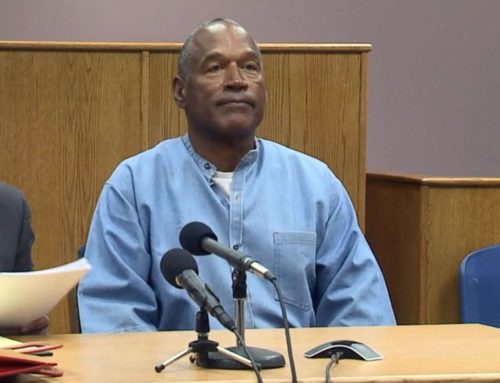“All white jury convicts African-American man of murder and votes to impose the death sentence”. That phrase sounds like something that would have occurred in the 1930’s. However, this is exactly what happened in 1987 in the case of Timothy Tyrone Foster. Mr. Foster is an African American man who has been on death row in the State of Georgia since he was convicted for the murder of an elderly white woman in 1987. The 6th Amendment to the U.S Constitution guarantees those accused of a crime the right to a trial before an impartial jury. The right to a jury trial is the backbone of the American court system. This is perhaps one of the most sacred rights we hold as Americans because it allows the people to decide who is innocent and who is guilty, not the government. What does impartial jury mean? It means that an individual has the right to be judged by a jury made up of a “fair cross section of the community”. This means that members of the jury should represent the various segments of the community.[3] For example if 80% of the people in a particular community are Hispanic, then one would expect a significant number of jurors on a jury in that community to also be Hispanic. Unfortunately, some prosecutors across the country have engaged in systematic efforts to keep minorities off of juries when the person accused is also a member of a minority. Prosecutors who engage in this practice believe that juries comprised of minorities are more likely to return a “not guilty” verdict. A jury is picked from a pool of potential candidates who live in the County, Town, or Village where the trial is taking place. Both the defense and the prosecution are allowed a certain number of what are referred to as “peremptory strikes”, meaning that they have the right to exclude potential candidates without having to offer a reason.[4] In practice what often happens is when the accused individual is a member of a minority group the prosecution purposely uses their peremptory strikes to ensure that members of that same minority group do not end up on the jury. The U.S Supreme Court, in a 1986 case called Batson v. Kentucky ruled that neither the prosecution nor the defense may exclude a juror based on race.[5] In Batson, in the trial of a black defendant the prosecutor used his peremptory challenges to strike all four black persons in the jury pool, and a jury composed only of white persons was selected. It was evident that the jurors who were struck were struck solely because they were the same race as the defendant. Ultimately the all white jury convicted the man. The case was appealed all the way to the Supreme Court, which as mentioned above, ruled that this practice was discriminatory, and violated the U.S Constitution.[6] After the Batson decision it looked as if racial discrimination in jury selection would be stopped, however prosecutors all across the country quickly developed ways to usurp the ruling in Batson. Basically, as long as a prosecutor can come up with a “legitimate” reason for striking a juror, even if the juror is the same race as a defendant, the strike will be ruled valid. It did not take long for prosecutors to begin to formulate strategies to continue to strike minorities from juries. The North Carolina Conference of District Attorneys presented a statewide training course in 1995 that included a handout called “Batson justifications: Articulating Juror Negatives,” listing 10 kinds of “justifications” that can be offered as a race-neutral explanation for a juror strike.[7] While the The Texas District and County Attorneys Association distributed a similar list, called “Batson Basics” at its Prosecutor Trial Skills Course in 2004.[8] In fact A 2010 review by Equal Justice Initiative of jury selection in eight Southern states found evidence of racial discrimination in jury selection in every one.[9] These practices and studies are troubling because they show that as long as the prosecution can come up with some “legitimate” reason, it is almost impossible to prove that jurors are being struck on the basis of race. The jury in Timothy Tyrone Foster’s trial was selected in 1987, one year after the Batson ruling was announced. As mentioned above, Mr. Foster is an African-American man, and at his jury selection the prosecution used their peremptory strikes to keep all the potential African American jurors in the jury pool from serving on the jury that was eventually chosen. Prosecutors used peremptory strikes to get rid of all four potential African American jurors. The prosecutors gave reasons that simply were not true. For example one African American was struck from the pool because the prosecution claimed, at age 34, the potential juror was too close in age to Mr. Foster, who was 19 at the time. However the prosecution declined to then strike a 21 year old white juror.[10] At the conclusion of the trial, the prosecutors told the all white jury sentence Mr. Foster to death “to deter people out there in the projects” from committing similar crimes. The jury listened, handed down a guilty verdict, and imposed a death sentence.[11] After numerous appeals to higher courts in the State of Georgia had been denied, the Southern Center for Human Rights finally got the prosecution’s notes from the jury selection, since these types of notes are routinely not kept, lost, or destroyed, this was a major feat.[12] The prosecution’s notes left no doubt that the four potential African-American jurors were struck because of race. The notes singled out the African American potential jurors’ names at least six different ways, including marking the names of black prospective jurors with a “B,” highlighting them in green, and circling the word “black” next to the “race” question on the juror questionnaires.[13] The notes also listed all of the African American potential jurors’ names on a list labeled “Definite NO”.[14] After hearing and seeing what the notes reflected, Supreme Court Justice Elena Kagan stated “Isn’t this as clear a Batson violation as a court is ever going to see?”.[15] As a result of the prosecution’s notes, the Supreme Court ordered that the State of Georgia must consider giving Mr. Foster a new trial in light of the racial discrimination committed by the prosecution in his case. As a result, Mr. Foster will be spared from lethal injection for the time being. Mr. Foster’s case represents just how dangerous and systematic racial discrimination can be in America. Even in 2016, the principles and rights that Rev. Martin Luther King Jr. and John F. Kennedy fought for are still being denied to citizens across the nation. [1] http://www.cnn.com/2016/05/23/politics/supreme-court-racial-discrimination/index.htmlJury Selection and Batson v. Kentucky
Prosecutors Deliberately Sought Removal of Jurors Based On Race
[2] Id.
[3] Handling a Criminal Case in New York § 19:101
[4] Id.
[5] Batson v. Kentucky, 476 U.S. 79, 106 S. Ct. 1712, 90 L. Ed. 2d 69 (1986)
[6] Id.
[7] http://www.cnn.com/2016/05/23/opinions/supreme-court-black-jurors-bright/index.html
[8] http://www.cnn.com/2016/05/23/opinions/supreme-court-black-jurors-bright/index.html
[9] http://www.cnn.com/2016/05/23/opinions/supreme-court-black-jurors-bright/index.html
[10] http://www.cnn.com/2016/05/23/opinions/supreme-court-black-jurors-bright/index.html
[11] Id.
[12] Id.
[13] http://www.cnn.com/2016/05/23/opinions/supreme-court-black-jurors-bright/index.html
[14] Id.
[15] http://www.cnn.com/2016/05/23/opinions/supreme-court-black-jurors-bright/index.html
U. S. Supreme Court Finds Racial Discrimination By Prosecution In Death Penalty Case
[1] On Monday May 23, 2016 the Supreme Court of the United States, in a 7-1 decision ruled that the prosecution in Mr. Foster’s case did indeed commit racial discrimination in jury selection.[2] The Court found that the prosecution deliberately sought to remove African-Americans from the pool of potential jurors solely due to their race. This practice is absolutely unconstitutional but sadly, not uncommon.




